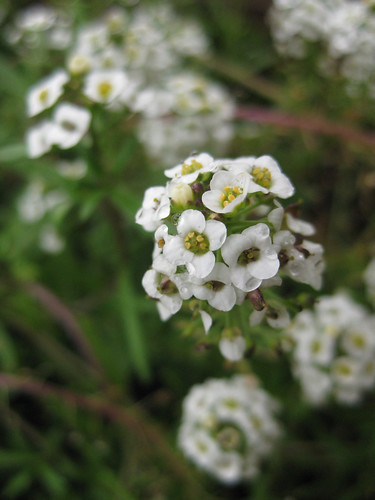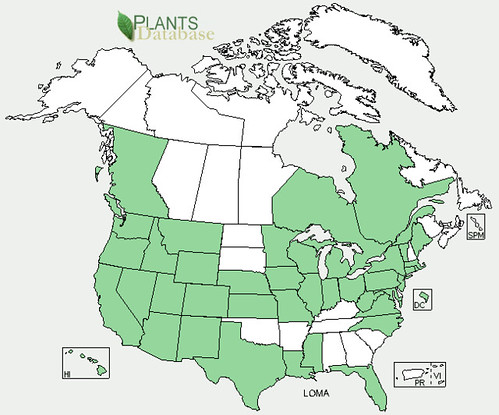Abundance: common
What: seeds, flowers
How: raw
Where: flower beds, landscaping
When: Fall, Winter, Spring
Nutritional Value: Vitamins, minerals, phyto-compounds,
Dangers: beware of pesticides
Alyssum flowers in a flower bed.

Close-up of flower and seed pods.

Close-up of flower.

North American distribution, attributed to U. S. Department of Agriculture.

People are surprised to learn sweet alyssum is actually a mustard (Brassica family). It's "fairy spiral" arrangement of seed pods and the four-petaled, six-stamened (4 tall, 2 short) flower are the clue. Generally considered to be a cool-weather plant, sweet alyssum is found in many flowerbeds fall to spring. Come summer’s heat they wilt and are usually removed.
While the flowers have a wonderful sweet aroma, the name "Sweet Alyssum" is somewhat misleading when it comes to flavor of raw, young, green seed pods which have the same spicy bite of other mustards. This makes them a funky replacement for radishes in a salad. They also go well with meats where one would normally add a dash of horseradish. The flowers can be eaten any time but the seed pods have the best texture/mouth-feel when still soft and green. The flavor of the leaves is unpleasant to most people but can still be cooked in the same manner as traditional mustard greens.
Warning: Beware of pesticides when harvesting sweet alyssum from flower beds, though if you are following the law you will have already talked to the owner and he/she can tell you if the bed had been sprayed.
Buy my book! Outdoor Adventure Guides Foraging covers 70 of North America's tastiest and easy to find wild edibles shown with the same big pictures as here on the Foraging Texas website.

